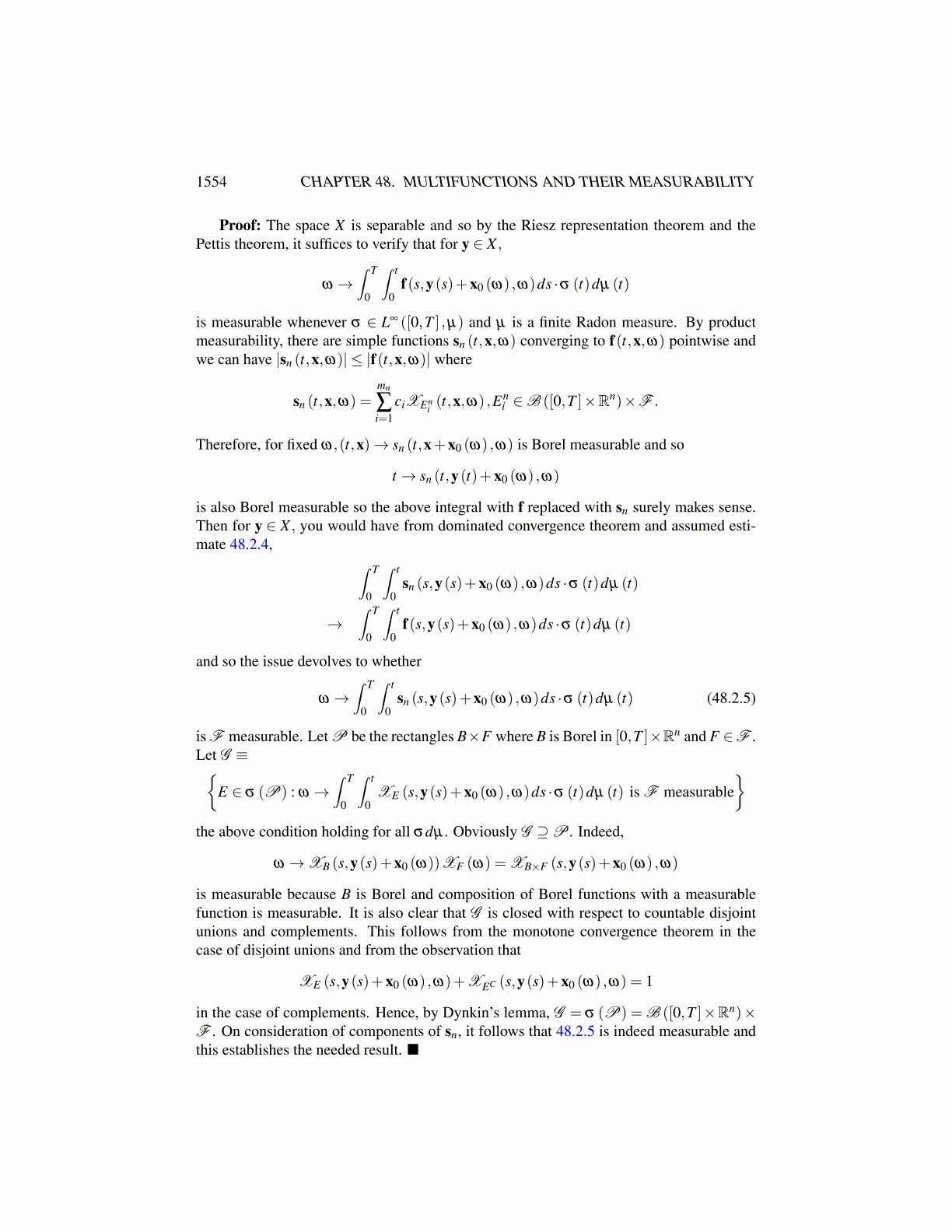
1554 CHAPTER 48. MULTIFUNCTIONS AND THEIR MEASURABILITY
also converges to x strongly. But this equals xr(ω) (ω) which shows that xr(ω) (ω) convergesstrongly to the measurable x(ω). Therefore,
f (x(ω) ,ω) = limr(ω)→0
f(xr(ω) (ω) ,ω
)= lim
r(ω)→0fr(ω)
(xr(ω) (ω) ,ω
)= lim
r(ω)→0xr(ω) (ω) = x(ω) .
As a special case of the above, here is a corollary which generalizes the earlier resulton the Brouwer fixed point theorem.
Corollary 48.2.14 Let (Ω,F ) be a measurable space and let K (ω) be a convex and com-pact set in Rn and ω → K (ω) is a measurable multifunction. Also let f(·,ω) : K (ω)→K (ω) be continuous and for fixed x ∈ Rn,ω → f(x,ω) is measurable. Then there exists afixed point x(ω) for f(·,ω) such that ω → x(ω) is measurable.
Note that in all of these considerations, there is no loss of generality in assuming f(·,ω)is defined on the whole space X thanks to the theorem which says that a continuous functiondefined on a convex closed set can be extended to a continuous function defined on thewhole space.
In the case of a single set, the following corollary is also obtained.
Corollary 48.2.15 Let X be a Banach space and let K be a compact convex subset. Letf : K×Ω→ K satisfy
x → f (x,ω) is continous
ω → f (x,ω) is measurable
Then f (·,ω) has a fixed point x(ω) such that ω → x(ω) is measurable.
Proof: The set K has a countable dense subset {ki}. You could consider Y as the closurein X of the span of these ki. Thus Y is a separable Banach space which contains K. Nowapply the above result.
If X is only a normed linear space, you could just consider its completion and apply theabove result. Since K is compact, it is automatically complete with respect to the norm onX .
What of the Schaefer fixed point theorem? Is there a measurable version of it? Amap h : X → X for X a Banach space is a compact map if it is continuous and it takesbounded sets to precompact sets. If you have such a compact map and it maps a closedball to a closed ball, then it must have a fixed point by the Schauder theorem. If you haveh = f (·,ω) where ω→ f (x,ω) is measurable, x→ f (x,ω) compact, then if f (·,ω) mapsa closed ball to a closed ball, it must have a measurable fixed point x(ω) by the above.Now the following is a version of the Schaefer fixed point theorem which can be used toget measurable fixed points.
Theorem 48.2.16 Let f (·,ω) : X → X be a compact map (takes bounded sets to precom-pact sets and continuous) where X is a Banach space. Also suppose that
sup{z ∈ f (B(0,r) ,ω)} ≤C (r)
independent of ω . Here ω → f (x,ω) is measurable for each x ∈ X. Then either